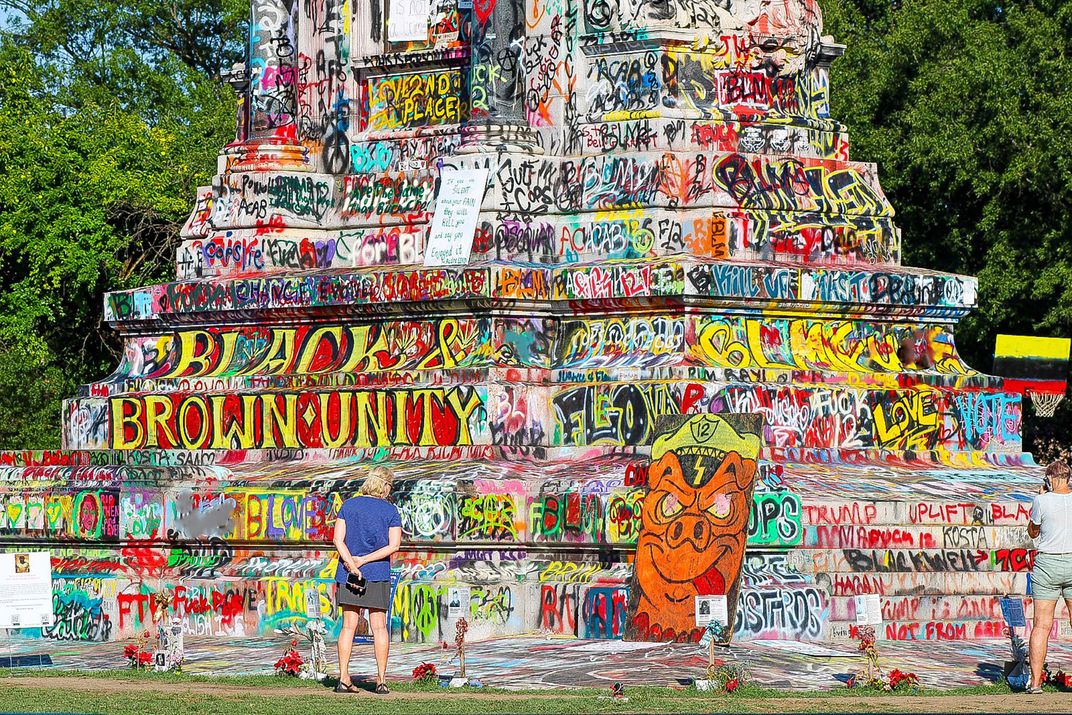After the death of Minneapolis resident George Floyd, the plinth of the Lee Monument was painted with brightly colored messages that called for police reform as protesters around Richmond began to march and call for justice. City residents transformed the canvas of the monument into a work of protest art. The monument was even named as one of the most influential forms of American protest art since World War II by New York Times Magazine. Sometimes residents who did not agree with the paint would show up at night and paint over all of the protest messages with a solid color or try to wash the paint away with chemicals. Those in support of the protests would simply return the following morning to repaint the surface of the pedestal. This cycle continued for months, and the result was an everchanging canvas with layers upon layers of painted messages as opposing groups tried to claim the monument and the space surrounding it. The monument itself was transformed into a police reform memorial. Community members placed small signs that featured a photograph of different individuals who died after encounters with the police around the entire base of the plinth. During the protests, thousands of visitors stopped by to read these signs. The signs included details about each of these encounters. During this time, the space surrounding the monument was unofficially renamed "Marcus-David Peters Circle" in memory of a young Richmond teacher who was killed by police while experiencing a mental health crisis.
| Date Taken: | 08.2020 |
| Date Uploaded: | 11.2023 |
| Photo Location: | Richmond, Virginia, United States of America |
| Camera: | Canon EOS Rebel T7 |
| Copyright: | © T. Otey |


